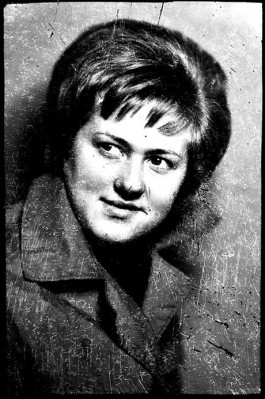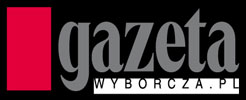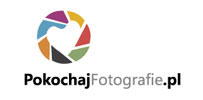Jerzy Lewczyński. Purification.

Curator: Wojciech Nowicki | czytelnia sztuki | dolnych wałów 8a | gliwice |
Vernissage 3 June 2011, 6 PM | Tel. 691 33 90 64 | The exhibition open until 3 September 2011
Jerzy Lewczyński is one of the most outstanding Polish photographers. He was born in 1924 in Tomaszów Lubelski; after the war he settled in Gliwice, where he has been living ever since. From a very early age he has been involved with photography. The exhibition in the Czytelnia Sztuki shows the most frequently recurring motifs and imagery employed in Lewczyński’s art. All the photographs collected at the exhibition ‘Jerzy Lewczyński. Purification’ come from the artist’s own archive; the first among them were taken in the 50s, whereas the last in the 90s of the previous century. ‘Jerzy Lewczyński. Purification’ is the first individual exhibition of his works organized in Gliwice – the city in which he has spent almost all of his life.
The exhibition has gathered photographs from many different stages of Jerzy Lewczyński’s artistic development. It includes his early pictures, showing the author’s fascination with the Italian neorealism; there are also slightly later works, in which one can find surrealist elements (present in fact in almost all of his oeuvre). Many of the photos displayed belong to the currents termed as ‘anti-photography’ (because they were viewed at the time of their creation as opposing the canon, as being anti-aesthetic) and as ‘archeology of photography’ (these in turn are the photos based on found photographs, indebted as it were to others). The exhibition also includes fairly recent works, made without the use of camera: most frequently photocopies of various documents – these constitute an almost utopian attempt at recording reality in its most minute manifestations. This endeavour is accompanied by the author’s conviction that it is necessary to promote photography; for he believes the photographic medium to be the universal instrument serving for recording and explaining reality – although he admits as well that failure forms an inevitable part of his efforts.
 The exhibition leads from the faith in photography as a medium granted with its own language (yet drawing heavily on the language of painting) to a certain photographic agnosticism. The young Lewczyński shows elements of reality that are difficult to read, that are opaque, dark, condensed; at times he makes them into sequences of unstable, unreliable meaning. Later on he deals with the essence of the medium itself; only to end up in doubt, showing reproductions made without the use of camera and meant simply to be read. His late art does not serve beauty anymore, but it is wholly subjected to his conceptual theory: journals, pages from notebooks, letters and documents reproduced by Lewczyński are a school of doubt not only in the transferability of emotions, but of basic facts as well. The notes are unreadable, the Polish of the old documents incomprehensible, the pages from notebooks are fantasies on the idea of writing rather than a real recording of language.
The exhibition leads from the faith in photography as a medium granted with its own language (yet drawing heavily on the language of painting) to a certain photographic agnosticism. The young Lewczyński shows elements of reality that are difficult to read, that are opaque, dark, condensed; at times he makes them into sequences of unstable, unreliable meaning. Later on he deals with the essence of the medium itself; only to end up in doubt, showing reproductions made without the use of camera and meant simply to be read. His late art does not serve beauty anymore, but it is wholly subjected to his conceptual theory: journals, pages from notebooks, letters and documents reproduced by Lewczyński are a school of doubt not only in the transferability of emotions, but of basic facts as well. The notes are unreadable, the Polish of the old documents incomprehensible, the pages from notebooks are fantasies on the idea of writing rather than a real recording of language.
The emphasis has been placed not only on the final outcome, but on the creative process as well. The exhibition is not limited to iconic photographs, those reproduced or shown at exhibitions most often; it includes as well pictures Lewczyński himself never appreciated, or held only to be a starting point. The display in the Czytelnia Sztuki is therefore an excellent opportunity to look over the photographer’s shoulder before his final decisions crystallized.
Jerzy Lewczyński has daringly agreed to entrust the role of the guide to his artistic world to a curator, whose choices do not have to necessarily mirror the artist’s own ones. What is more, the decision to show not only the final results, but the creative process as well means making available photographs, which the artist might view as blind attempts, or merely a bit of fun; those however surely merit the display, as they lead to innovative solutions of the highest conceptual degree.
‘Jerzy Lewczyński. Purification’ is an exhibition that consciously breaks with the chronological order, it is rather based on free associations, it discards the context of the history of photography – therefore it concentrates on the creative process of the author, not on his fascinations or artistic friendships, such as the collaboration with Zdzisław Beksiński, Bronisław Schlabs, Zofia Rydet, or contacts with Urszula Czartoryska. Those aspects will find its place in an album prepared by the Czytelnia Sztuki.
The exhibition ‘Jerzy Lewczyński. Purification’ is a tribute to a photographer for whom all photographs are important – not only his own, but also those destroyed objects, once a part of someone’s existence, and today abandoned in attics and rubbish heaps. It is a tribute to an artist who set out new ways of thinking, it is a guide to his intricate oeuvre. The Gliwice exhibition is an attempt to chart new borderlines, to purify Lewczyński’s works from unnecessary elements.
Jerzy Lewczyński – photographer. The author of the theoretical concept of ‘archeology of photography’, on which he has been working since the end of the 60s. His other fields of interest are the history of photography, criticism and feature writing on photography. In 1999 he published his ‘Anthology of Polish Photography 1839–1989’.
Wojciech Nowicki – journalist, feature writer, photographer, exhibition curator. His essays on photography, published by the Czarne publishing house in the collection ‘The Fundus of the Eye’, were nominated in 2011 to the NIKE award. Co-founder of the ‘Imago Mundi’ foundation
ATTENTION: This exhibition is available for tour to additional venues after closing in Czytelnia Sztuki Gallery, Poland. If you are interested in hosting the exhibition in your museum or gallery please contact us for information.
media partners:

